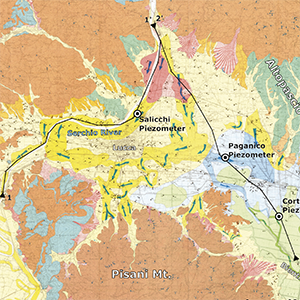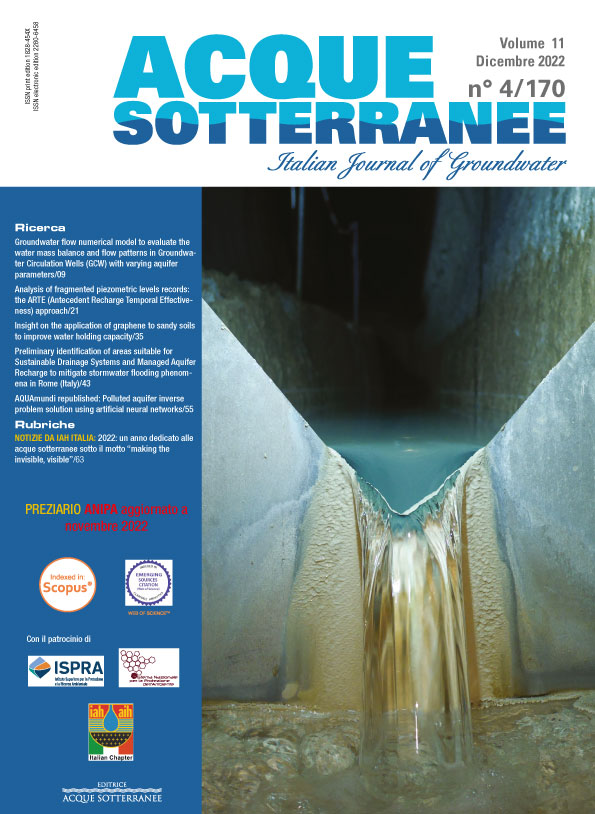Analysis of fragmented piezometric levels records: the ARTE (Antecedent Recharge Temporal Effectiveness) approach

All claims expressed in this article are solely those of the authors and do not necessarily represent those of their affiliated organizations, or those of the publisher, the editors and the reviewers. Any product that may be evaluated in this article or claim that may be made by its manufacturer is not guaranteed or endorsed by the publisher.
Accepted: 21 June 2022
Authors
In contrast to climatic data, piezometric records are often fragmented both in time and space continuity, despite their crucial importance in groundwater studies. This work presents a new method for analysis of groundwater level vs. recharge processes relation from fragmented piezometric data, called Antecedent Recharge Temporal Effectiveness (ARTE). The ARTE method was tested on 5 year-long (2016-2020) water table level datasets measured by three automatic piezometers located in the Lucca plain (Tuscany, Italy). For each piezometric level time series, measurements were extracted every 30, 60, and 120 days, and randomly, obtaining fragmented records inlcuding less than 3% of the complete time series. As for recharge processes of the monitored aquifer, rainfall and riverbed infiltration were selected. Hence, daily rainfall and daily mean river stage time series were acquired from different automatic raingauges and hydrometers respectively. The relationship between these recharge processes and the variation of the piezometric level from the artificially fragmented datasets were evaluated with the ARTE method. The ARTE method was potentially able to identify maximum correlation time intervals, for which the recharge processes are most likely to influence the groundwater level. Based on the analysis conducted on the fragmented piezometric datasets, the reconstruction of each piezometric time series was attempted for the study period. The simulated daily groundwater level records have RMSE values between 0.21 m and 0.73 m and NRMSE values between 0.08 and 0.16, which are satisfactory results when compared with other more complex simulation procedures, in which the training datasets are increasingly larger.
How to Cite

This work is licensed under a Creative Commons Attribution-NonCommercial 4.0 International License.








